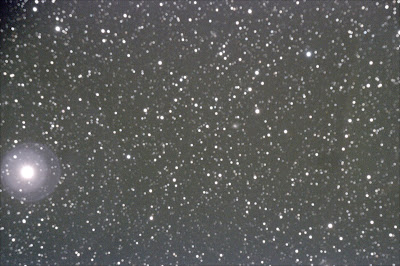After aligning the mount with the polar scope, I fired up SharpCap and started capturing images to refine the polar alignment of the mount. For some reason SharpCap couldn't solve the images. I haven't had this happen previously. After several tries, I gave up and just relied on the polar scope alignment. Building the pointing model went smoothly as all the gotos were very close.
I started off the evening with an old friend, The Owl Cluster, also known as the E.T. cluster in Cassiopeia.
(NGC 457) 4 x 60 sec frames, no darks or flats Gain = 300
I then continued my project to image both Herschel 400 observing lists. Most of these are very small (< 2 arcmin in diameter) so I'll not include all the images here, but I captured; H 79-1 (NGC 3147), H 288-1 (NGC 2655), H 78-1 (NGC 2985), H2 578-3 (NGC 1207), H2 607-2 (NGC 1175), H2 43-8 (NGC 1750), H2 8-2 (NGC 1587), & H2 34-5 (NGC 1990).
H2 578-3 (NGC 1207) 6 x 3 min exposures @ gain = 300, no darks or flats
H2 43-8 (NGC 1750) 8 x 60 sec exposures @ gain = 300, no darks or flats
H 288-1 (NGC 2655) 8 x 3 min exposures @ gain = 300, no darks or flats
H2 8-2 (NGC 1587) 9 x 3 min exposures @ gain = 300, no darks or flats
At 1217 am I measured the sky brightness as 21.12 = 6.18 NELM. A nice clear humid night. The dew while bad, was not as bad as last night.
With Orion rising in the east, I decided to try and capture the Flame and Horsehead Nebulas. The focus is a little off and the guiding wasn't great, but a nice image of a beautiful portion of the night sky.
The Flame Nebula (NGC 2024) and The Horsehead Nebula (B 33)
27 x 120 second exposures @ gain = 300, no darks or flats
With the forecast for rain late Thursday through Saturday, I got up Thursday morning, packed up my gear and headed home. As always, I had a great time at this star gaze.








